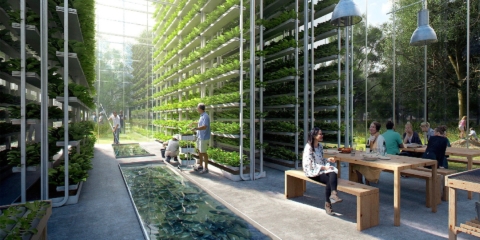Would you like to get notifications from Christian?
What happened? Natural disasters have caused catastrophic damage to humans and infrastructure around the world for centuries. Finding a way to reduce this impact has been a key focus for governments, scientists and researchers. It looks like we may have found a promising way forward: detecting natural disasters with IoT, sea-floor sensors, artificial intelligence, and machine learning.
Why is this important? Early detection and warning systems for natural disasters can help save many human lives, protect infrastructure, and reduce economic damage. For example, in 2017 Hurricane Harvey caused $125 billion in damage in the United States. If a similar hurricane was detected early enough, people could evacuate before it made landfall, which would undoubtedly save lives.
This is just the beginning. As we continue to develop sensors, AI, and IoT technology, we will be able to detect more types of natural disasters and predict them with even more accuracy. In the future, we may be able to use this technology not only to predict weather events but also earthquakes, volcanoes, and tsunamis. The potential applications are endless.
What do you think? Are you in favor of using sensors, AI, and IoT to predict natural disasters? Do you think this technology will be able to help reduce the damage caused by these events? Let us know in the comments below.
Author: Christian Kromme
First Appeared On: Disruptive Inspiration Daily
Christian is a futurist and trendwatcher who speaks about the impact of exponential technologies like AI on organizations, people, and talents. Christian tailors his presentations to your audience's specific industries and needs.



Our world is changing at an exponential rate! A big tidal wave of digital transformation and disruption is coming at us fast. Many organizations see this wave as a threat and experience stress, but there are also organizations that just see this wave as an opportunity.

Imagine sitting with just 10-15 fellow executives at a premier location, gaining clarity on the impact of AI on your industry while enjoying an exquisite dining experience. These are not just meetings—they are transformative moments that will shape the future of your organization



In the future, 3D printing and generative design will allow for products to be designed in a more decentralized manner, and production will take place closer to the customer and fully on-demand. 3D printing technology will also allow for more customization and personalization of products.


The agricultural industry is ripe for disruption. Robotics, AI, and IoT are all technologies that have the potential to radically transform the way we grow food. In combination with vertical farming, these technologies could increase the efficiency and quality of agricultural products.

A human-centered society is one that puts people first and where technology is used to unite and empower people. It is a society that values biological life and dignity above all else. It is a society that recognizes the importance of human relationships and works to strengthen them. In a human-centered society, all members of the community are valued and treated with respect.


The future of healthcare is here. New technologies like AI, IoT, big data, and smart sensors make it possible to become the CEO of your own health. Imagine that your phone can listen to your voice and AI algorithms can detect small nuances in the tone of your voice that indicate specific diseases.
